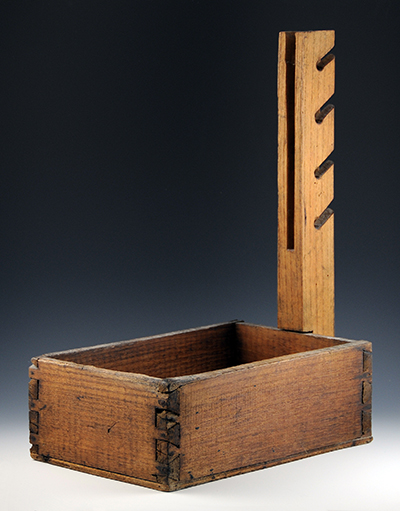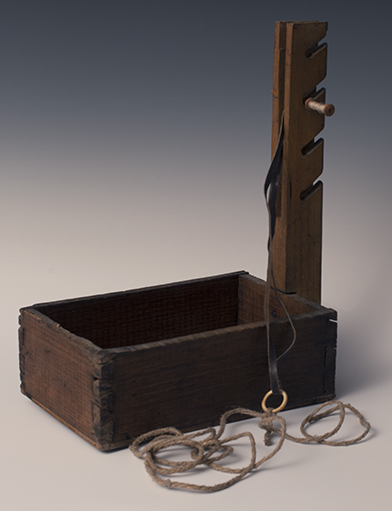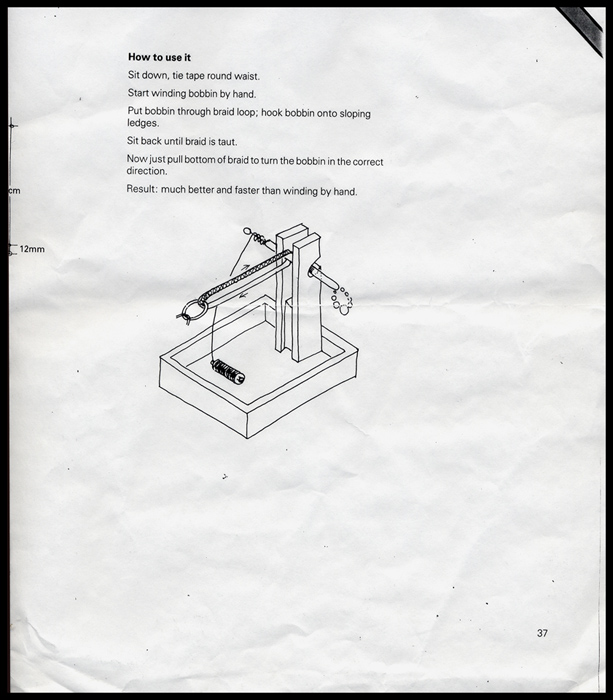|
Primitive Bobbin Winder
need measurements
Very good condition, aged patina and some wear along the edges. The survival of the cord, driveband, and ring in working condition is remarkable. It also came with a black sheet of some stiff material, purpose unknown.
Illustrated in "Bobbinlace Bobbin Winders", The Spinning Wheel Sleuth, 2022.
This simple 'box' friction winder is better made than it first appears. Note the dovetails in the box side joins. The survival of the drive band, ring, and tensioning cord makes this an extremely rare survivor.
The instructions that came with the piece are in English and show English bobbins. Some English bobbins were also included in the winder's box, although they really aren't suited for a friction winder.
But notice a very similar winder being used in this Belgian Trenkler postcard.
Then again, the French description given below indicates that this type of winder was found in the Miracourt region which did use friction winders.
I'm influenced most by the Trenkler postcard and will put this in the Belgian winder category. Although it is possible that it was used in other places.
(Need reference)
outil très simple communément appelé jean-fait-tout ou j'en fais tout et qui peut être orthographié de bien d'autres manières encore, chinés avec des fuseaux anciens de dentellière dans la région de MIRECOURT , berceau de la dentelle traditionnelle dans les VOSGES, outils à main servant à regarnir les fuseaux , la dentellière obtenait la rotation des fuseaux par une lanière de cuir attachée à sa ceinture et maintenue tendue, celui est brut et est resté en attente de finition , simplement ébauché par le mari de la dentellière ou par le menuisier local !
Very simple tool commonly called "jean-fait-tout" or "j'en fait tout" and which can be spelled in many other ways, found with old lace bobbins in the region of MIRECOURT, cradle of traditional lace in the VOSGES. Hand tools were used to wind the bobbins, the lacemaker obtained the rotation of the bobbins by a leather strap attached to her belt and kept stretched. This is raw and remained awaiting completion, simply constructed by the husband of the lacemaker or by the local carpenter!
purchased 04/08/2007
first posted 9/12/2009
|


